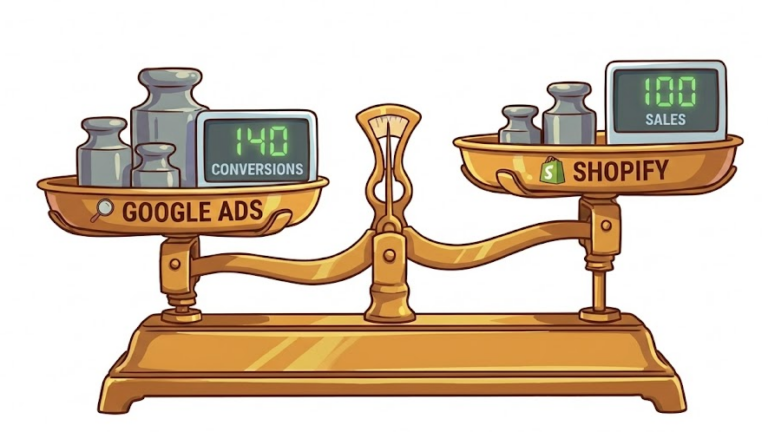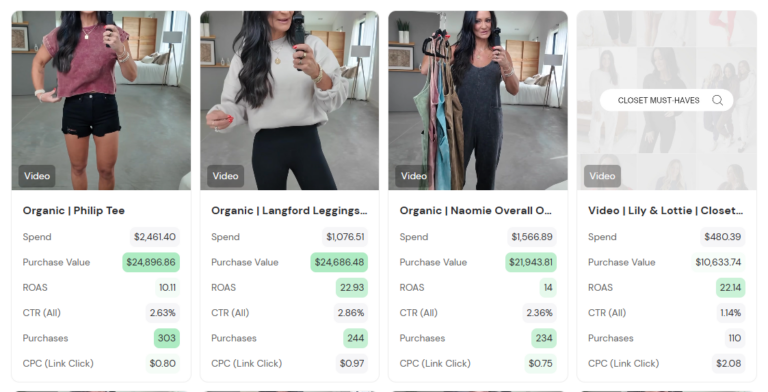“Our conversion rate dropped 27% overnight. Site speed is fine. No visible bugs. What’s happening?”
What would you say if you got that distress call?
See, most conversion drops aren’t what they seem.
While everyone obsesses over page speed scores and app conflicts, the real revenue killers hide in places you’d never think to look.
Data integrity failures. Market-specific configuration drift. Platform bugs that only surface under exact conditions.
Which is why, this guide isn’t another checklist of CRO tweaks.
It’s what $5M+ teams actually check when revenue falls off a cliff with no obvious cause.
No B.S. No generic advice about trust badges. Just the diagnostic framework that’s saved our clients from six-figure losses.
The 5-Minute Reality Check
Before you spiral into full panic mode or start randomly disabling apps, run this triage. It fixes 15-20% of “mysterious” conversion drops before you need deeper diagnostics.
These sound obvious, but they are critical enough that no troubleshooting would be complete without them.
Check your analytics for sudden traffic changes
Takes 30 seconds. For instance, If Google blew up or tanked your rankings overnight, your “conversion problem” might actually be a traffic problem or a traffic quality problem.
Related: Why Your Shopify Store Slows Down During Big Sales (It’s Not the Hosting)
GA4 DebugView: Are events firing twice? Or not at all?
Having two trackers active can lead to a double count of events in GA4. “It was working fine last week,” is common, so it’s worth checking.
Shopify Status Page: Any platform-wide outages?
Sometimes it really is them, not you. Check status.shopify.com before you tear apart your store.
QA your checkout on mobile — test full flow with tracking blockers on
Use a fresh incognito session. Add to cart. Reach checkout. Actually complete it.
You’d be amazed how many “conversion drops” are just broken buttons.
Review the last 72 hours of theme/app changes
Check your notification emails. Someone always touched something.
What NOT to Waste Time On
If you’re reading generic Shopify optimization blogs, you’ll see the same tired advice:
- “Improve product photos”
- “Add trust badges”
- “Simplify checkout” (you’re on Plus, it’s already simple)
- “Use urgency tactics”
- “Speed up your site” — without saying what exactly to fix
Stop.
Don’t waste your time with that. This is about diagnosing sudden issues, not tweaking button colors.
The rest of this guide focuses on the deeper problems you should check for.
The False Panic vs Real Problems: Data Integrity Failures
Here’s a fun fact: roughly 40% of “conversion drops” aren’t real.
They’re measurement failures masquerading as business problems.
Tracking Configuration Drift
Your tracking setup is like a Jenga tower. Stable for months, then one small change brings everything crashing down.
Remember when iOS 14.5 dropped and everyone panicked about Facebook ads?
That’s still happening, just more slowly. As Apple users update their phones throughout the year, you’ll see gradual attribution decay that suddenly hits critical mass.
What this looks like: Gradual increase in “direct” traffic, decrease in paid social conversions, but total revenue stays flat.
Server-Side Tracking Gaps
Fairly typical scenario: The user has to physically accept an Upsell item OR click the “no thanks” option and wait for the page to load.
Data tells us the combination of these two happens less than 50% of the time.
Your server-side setup might be missing edge cases:
- Post-purchase upsells not firing purchase events
- Subscription renewals credited to the wrong source
- B2B orders placed via draft orders bypassing tracking entirely
Pixel/CAPI Mismatches
When your browser pixel says 100 conversions but your Conversions API says 73, which do you trust?
Neither, until you fix the mismatch.
Real example: A $6M fashion brand thought conversions dropped 22%.
Reality? Their CAPI setup was filtering out orders over $500 as “likely fraudulent.”
Their Black Friday average order value spike triggered false positives.
The Attribution Illusion
Even after users accept all cookies via the Shopify consent banner, the Google Tag Assistant shows that Google Ads tags (Conversion, Remarketing, GA4) are still blocked (denied) on checkout pages.
Modern Shopify stores have complex customer journeys that break traditional attribution:
Post-Purchase Upsells Stealing Credit
Customer buys via Facebook ad → sees post-purchase upsell → accepts upsell → only the upsell gets tracked as a conversion.
Meanwhile, your primary purchase is lost in the void.
Cross-Domain Tracking Breaks
Customer goes from yourstore.com → checkout.shopify.com → paypal.com → back to yourstore.com.
Good luck maintaining that session. Especially brutal with multiple payment providers.
Direct Traffic Spike = Attribution Failure
A sudden spike in direct traffic with no corresponding conversion drop?
That might not be people typing in your URL. That might be attribution failing.
Real example: A beauty brand saw 40% “drop” in paid conversions. Turned out Klaviyo’s new checkout abandonment flow was converting customers via email, but they were returning via direct links in the email client, breaking attribution.
Revenue was actually up 12%.
Quick Data Integrity Audit
Before you panic about conversions, verify your data:
- Compare Shopify admin revenue to GA4 revenue: > 10% discrepancy = tracking problem
- Check your “direct” traffic trend: Sudden spike = attribution breaking
- Look at source/medium distribution: Did one source crater while others stayed flat?
- Segment by new vs returning: Attribution problems hit returning customers hardest
If your data integrity is compromised, you’re optimizing based on lies.
Fix the measurement before you fix the “conversion problem.”
Market-Specific Conversion Killers
Your store might be working perfectly… for your home market.
But international expansion creates invisible failure modes that only affect specific segments.
The Geolocation Trap
A user located in France lands on the US shopping experience.
Sounds simple to fix with auto-redirects, right? Wrong.
Related: Scaling Shopify Internationally: Architecture Choices That Make or Break $5M+ Brands
Here’s where it breaks:
Auto-Redirect Loops
Customer clicks Google Shopping ad for your US store → Shopify detects they’re in Germany → redirects to DE store → Google Shopping destination URL mismatch → ad disapproved → customer bounces → conversion dead.
IP-Based Pricing Chaos
Customer VPNs from UK to US → sees USD prices → VPN disconnects mid-session → prices flip to GBP → cart shows different total → trust destroyed → conversion dead.
Shipping Calculator Regional Failures
Your shipping calculator works great for 95% of destinations.
But that specific province in Canada? The one where postal codes have that weird format?
Calculator throws an error. Only affects 2% of traffic, but it’s YOUR 2%.
Real example: PostNL changed their API response format, breaking address validation for Dutch customers only. Every Dutch customer saw “Invalid shipping address” at checkout.
Multi-Currency Gotchas
A customer in Australia adding items to their cart, seeing prices in AUD, only to be surprised by a USD conversion at checkout with unexpected fees or rates.
This jarring experience can lead to cart abandonment.
Currency issues create the worst kind of conversion killer: customers who feel deceived.
Rounding Rules Creating Price Barriers
Your $99.99 USD product → €94.73 with live rates → Shopify rounds to €95 → Still under psychological barrier → Monday morning: rates shift → €100.01 → Psychological barrier hit → 30% fewer EU conversions.
True story.
To make things more interesting, the currency exchange rate might change between the time of authorization and the time you capture your funds manually, and this can result in a “small discrepancy”.
But here’s what Shopify doesn’t tell you: those “small discrepancies” compound into trust issues:
- Customer sees €89 in cart
- Gets charged €91 due to rate change
- Leaves 1-star review about “hidden fees”
- Future customers see review → conversion drops
Payment Processor Currency Restrictions
Your payment processor supports 135 currencies – awesome!
Except… not all currencies in all countries.
German customers can’t pay in USD through certain processors. Swedish customers need SEK for Klarna.
Miss these edge cases and conversions start to evaporate.
Real example: $15M electronics retailer lost 45% of Norwegian conversions when their payment processor quietly stopped supporting NOK for digital goods. Customers saw prices in NOK but couldn’t complete checkout.
Regional Diagnostic Quick Wins
- VPN Test: Access your store from the affected country. Full checkout process. Document every price shown.
- Payment Method Audit: 9% of customers will drop off if their favorite payment method isn’t available.
- Currency Consistency Check: Screenshot price on: PDP → Cart → Checkout. Any variance = conversion killer
- Google Shopping Sanity Check: Verify your feed URLs match your redirect logic
Platform & Integration Breaking Points
These are Shopify quirks, integration failures, and edge cases that suddenly surface after months of stability.
Inventory Sync Catastrophes
Nothing kills conversions faster than “out of stock” on products you actually have.
Multi-Location Inventory Lies
You’ve got 500 units across 3 warehouses. Shopify shows “In Stock.”
Customer adds to cart. Reaches checkout. “Sorry, this item is no longer available.”
Why? Your California warehouse has 500 units.
But the app logic checks the customer’s nearest location (New York) first. NY has 0 units. App doesn’t check other locations. Conversion dead.
Real example: $12M fashion brand lost 38% of conversions on their top SKU. Turns out, the inventory sync app was checking the wrong location ID after they added a new fulfillment center. Took 4 days to diagnose.
Bundle Breaking Points
Bundle apps work great.
Until they don’t:
- Parent product metafield updates → bundle logic breaks
- Component variant goes out of stock → entire bundle shows unavailable
- Pricing sync lag → bundle shows old price until cart refresh
Pricing Engine Failures
B2B pricing. Volume discounts. Customer-specific rates. Each one might just be a ticking time bomb.
For instance, customers with addresses in other countries see an error message.
But it’s worse with B2B:
- Customer logs in → sees retail prices
- Why? Their customer tag didn’t sync
- Or their company metafield is empty
- Or the B2B app’s webhook failed silently
Or imagine a customer who qualifies for 20% off at 50+ units.
Customer adds 51 units to cart → Discount applies → Customer changes quantity to 52 → Discount recalculates → Shows different percentage → Customer confused → Abandons cart
Or an EU store that shows tax-inclusive prices: the customer expects €100 total, but checkout calculates tax on top, and shows €121. Customer thinks, “Hidden fees!” and rage quits.
A $9M B2B-DTC hybrid lost 52% of wholesale conversions overnight. Their customer tag sync failed after a Shopify Flow update. Wholesale buyers saw retail prices for 6 days before anyone noticed.
Authentication & Account Bugs
If you’ve grown an ecommerce business to six figures, you can be forgiven for thinking, “Customer accounts are simple.”
Reality: they’re not.
The Forced Logout Plague
Shopify updates something → All customers logged out → Returning customers can’t access order history → Guest checkout conversions spike → Account-based conversions crater
B2B Portal Permission Drift
B2B customer logs in → “You don’t have permission to access this store” → But they’ve been ordering for 2 years → Portal permissions reset during theme update → 100% conversion loss for B2B segment
Checkout Configuration Drift
We’ve already spoken about international currency issues, but even for single-currency stores, checkout is where invisible configurations create visible failures.
Express Checkout Vanishing
Apple Pay works on Safari → Disappears on Chrome → But only for logged-in customers → Who have a saved address → In specific countries → During full moons (okay, not really, but it feels that random)
Local Payment Method Failures
- iDEAL available for Netherlands → Customer selects it → Spins forever → No error message
- Why? Your EUR processing is through US entity → iDEAL requires EU entity → Processor rejects silently
Billing Address Validation Gone Wrong
German address format: Straße → Your validation: “Street” only → Customer can’t enter ß character → Form rejects → Conversion lost
Real example: Pet supplies store lost 67% of Quebec conversions. Shopify’s address validation couldn’t handle French characters in postal codes after a platform update.
Shipping Logic Bombs
These aren’t performance issues, but configuration failures that only surface under specific conditions.
Carrier Rate Timeout Chaos
- USPS API changes response format
- Your timeout set to 3 seconds
- API now takes 3.1 seconds (still fast!)
- Timeout hit → No shipping options → Ghost cart
Free Shipping Threshold Currency Confusion
“Free shipping over $100” → Converts to “Free shipping over €85” → Customer has €87 in cart → No free shipping → “This site is lying to me”
Delivery Date Calculator Lies
Shows “Delivery by Tuesday” → Customer excited → Completes order → Email says “Delivery in 7-10 business days” → Trust broken → Reviews tank → Future conversions drop
Real example: Australian store’s US conversions dropped 60% overnight. USPS API changes made shipping options disappear for several ZIP codes. Only affected 15% of US customers, but they generated 60% of US revenue.
The Diagnostic Decision Tree
Stop guessing. Start diagnosing systematically.
The 60-Minute Forensic Workflow
Phase 1: Segmentation (10 minutes)
First, identify the pattern:
Open Google Analytics. Go to Conversions. Segment by:
- Country (is it geographic?)
- Device (mobile dying, desktop fine?)
- Traffic source (one channel tanking?)
- New vs returning (which segment dropped?)
Document exactly what dropped:
- Overall CVR: 3.2% → 2.1%
- Mobile CVR: 2.8% → 0.9% ← BOOM, there’s your segment
- Desktop CVR: 3.6% → 3.5%
Now you know where to dig.
Phase 2: Transaction Testing (20 minutes)
Become your customer. Actually buy something.
For affected segment:
- Use VPN to match customer location
- Use device type that’s failing
- Add typical basket to cart
- Document every single price shown
- Reach checkout (note any delays/errors)
- Try every payment method
- Complete purchase if possible
Critical: Screenshot everything
- Every price display
- Every error message
- Every loading spinner
- Payment method availability
Real customer quote that saved us 6 hours of debugging: “The price changes when I click checkout.”
Phase 3: Integration Audit (20 minutes)
Check the plumbing that nobody thinks about:
Payment Gateway Logs:
- Failed transaction reasons
- Response codes by country
- Timeout patterns
App Webhook Status:
- Check each app’s status page
- Look for failed webhook deliveries
- Review error logs from last 72 hours
API Key Expiration:
- Shipping carrier credentials
- Payment processor tokens
- Third-party service keys
One expired API key can crater conversions for an entire segment while everything else works perfectly.
Phase 4: Configuration Archaeology (10 minutes)
“But nothing’s changed!”
Something always changed.
Check in this order:
- Shopify Email Notifications – Every change sends an email
- Theme Version History – Someone always “just tweaked” something
- App Update Logs – Auto-updates are conversion killers
- Shopify Changelog – Platform updates you didn’t know about
- Payment Processor Notices – They love changing things without telling you
Document what changed in the 72 hours before the drop. 90% of the time, that’s your smoking gun.
Next Steps: Prevention is Better Than Cure
So, how do you get ahead of this problem and stop playing defense?
There are three critical things you need to keep in mind.
1. Monitor for drift
Most teams only build monitoring systems for performance.
But in enterprise ecommerce, the biggest leaks are caused by configuration drift — and those are invisible unless you build monitoring for what shouldn’t change.
These failures are rare. But when they hit, they can cost you five figures in a matter of hours.
So, if you’re wondering whether you should monitor them, ask yourself what one such failure is worth to your business. And how fast you want to know when it happens.
2. Solve the Ownership Problem
When conversion tanks, whose job is it to know first?
If your answer is “marketing,” but the root cause is in payments, shipping, or localization — then you don’t have a conversion problem. You have an accountability gap.
This guide showed you what to look for, but long-term, someone needs to own observability.
3. Distinguish Between Optimization and Troubleshooting
Optimizing conversions is about psychology. Diagnosing drops is about systems.
Confusing or mixing up the two results in chasing UX tweaks while silent killers like API drift and tracking mismatches bleed revenue.
Don’t make that mistake.
Book a free discovery call to get help from our specialists.
No fluff. No sales pitch. Just fast, actionable insight.






no replies